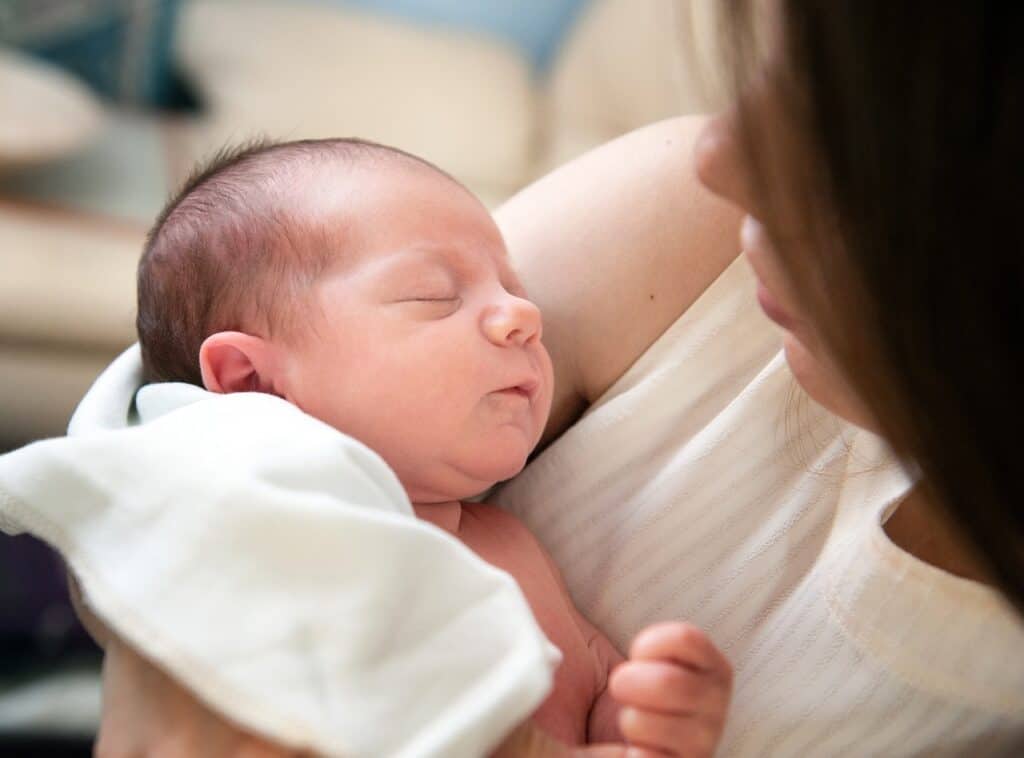Becoming a new mom introduces a world of joy and a host of new responsibilities. One essential tool that can make this journey easier and more fulfilling is the use of a baby sling. This guide aims to provide comprehensive insights into the world of baby slings, ensuring that you can carry your little one comfortably and safely.
Why Wear Your Baby in a Sling?
Wearing your baby in a sling, often referred to as babywearing, is much more than a trend. It’s a practice that has been embraced globally for centuries due to its numerous benefits. Babywearing in a sling or a baby carrier wrap fosters a stronger bond between you and your infant, as the close contact promotes a deep emotional connection. It’s also immensely practical – with your baby snugly in a sling, your hands are free to tackle daily tasks. Moreover, babies carried in slings are often calmer, as the constant rhythm of your heartbeat and movements provide a soothing effect. For newborns, a well-designed baby carrier can offer both comfort and support, ensuring they’re safely nestled against you. When choosing baby carriers for newborns, it’s important to consider factors like softness, adjustability, and how they distribute weight to keep both you and your little one comfortable.
Types of Baby Slings
The variety of baby slings available can be overwhelming for new parents. The most common types include ring slings, pouch slings, and the versatile baby carrier wrap. Each type offers unique benefits. Ring slings, adjustable through metal rings, offer ease of use and are excellent for short trips. Pouch slings are simpler but less adjustable, making them suitable for experienced users. The baby carrier wrap, known for its versatility and snug fit, can be adjusted to various carrying positions, making it a favorite among new parents.
Choosing the Right Sling for You
Selecting the right sling involves considering several factors. Your baby’s age and weight are crucial in determining the appropriate sling. For newborns and smaller infants, a soft, supportive infant sling is ideal. As your baby grows, you might prefer a more structured sling that can accommodate their increasing weight. Comfort is also paramount – choose a sling made from breathable, soft fabric, especially if you live in a warmer climate.
Getting the Proper Fit
Achieving the right fit is not just about comfort; it’s essential for safety. A properly fitted sling should securely hold your baby close to your body. The infant should be at a kissable height, meaning you can easily bend your head to kiss their forehead. Ensure that the baby’s back is supported, and their hips are in a natural, ergonomic position to promote healthy development.
Safe Babywearing Practices
Safety is paramount when it comes to babywearing. It’s essential to regularly check the sling for any signs of wear and tear. Always ensure your baby’s face is visible and not covered by the sling fabric. The baby’s chin should not be pressed against the chest, as this can restrict breathing. Be mindful of your baby’s position and comfort, and never engage in activities that could jostle or harm the baby while they are in the sling.
Using a Sling for Nursing
A baby sling can be an excellent tool for nursing mothers. It offers privacy and allows you to breastfeed discreetly while on the go. The key is to adjust the sling for both your comfort and the baby’s. Ensure that the baby’s head is supported and that their face is not pressed against the fabric during nursing. Always reposition your baby to the upright position after nursing.
Troubleshooting Common Issues
New parents might face challenges like discomfort while using the sling or difficulty in positioning the baby correctly. If the sling causes back or shoulder pain, it might be due to improper fit or distribution of weight. Experiment with different carrying positions and adjustments to find what works best for you. If your baby seems unsettled in the sling, ensure they’re not too hot, cold, or in an uncomfortable position. Patience and practice are key to mastering the art of babywearing.
Incorporating a baby sling into your routine as a new mom can be a game-changer. It not only strengthens the bond with your baby but also provides practical benefits that make parenting a bit easier. Remember, the most important aspect is the safety and comfort of both you and your baby. Happy babywearing!





